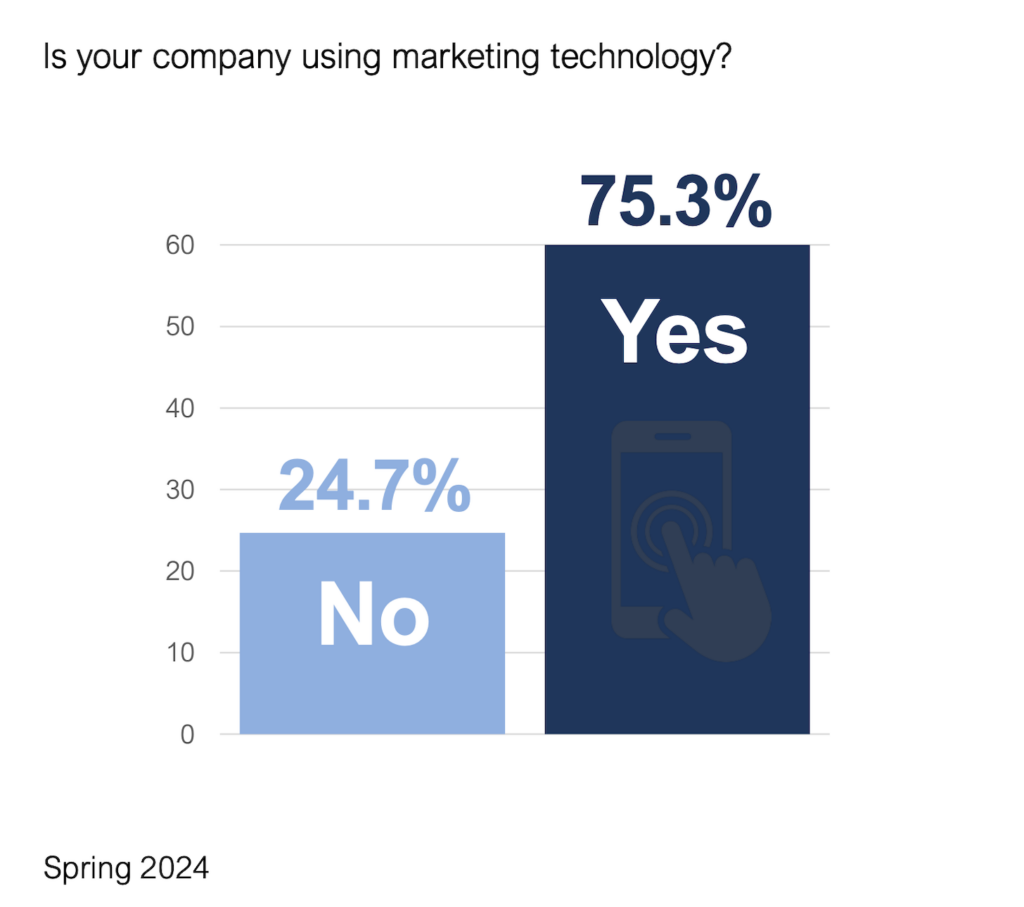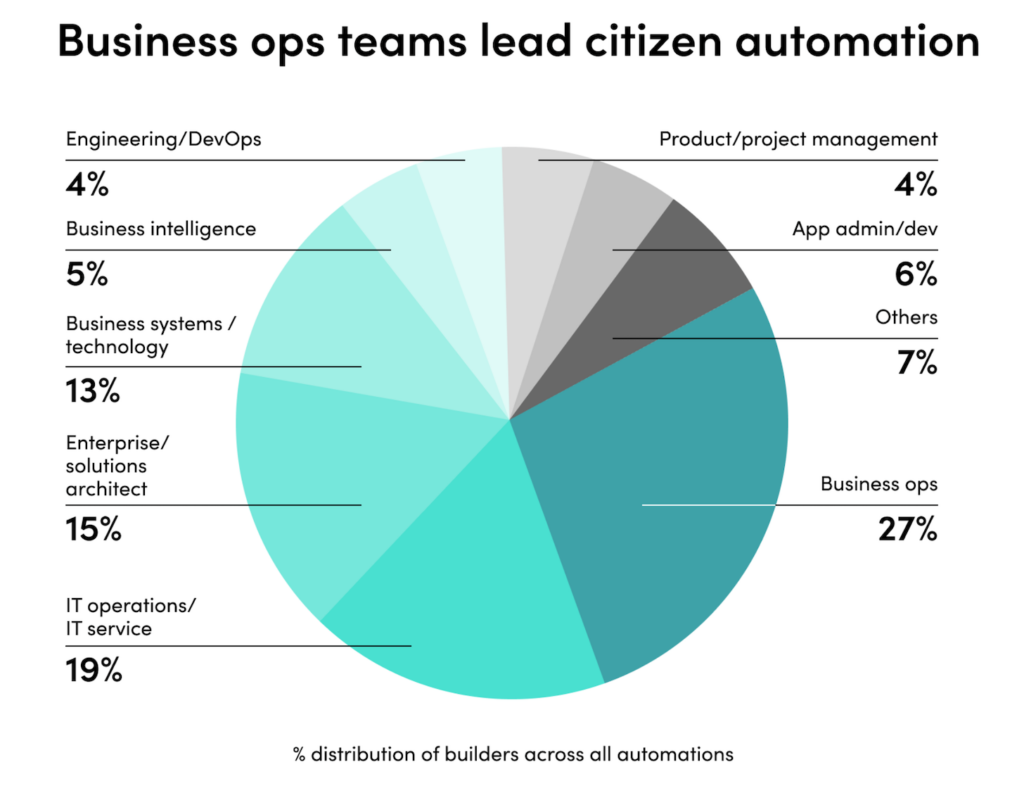I want to share an idea with you that’s been in my head for a while.
It may sound fairly obvious — and perhaps it is, to most of you. It is how I’ve seen people make choices with marketing technology that materially alters the outcome. But I suspect that they’re not always consciously aware of it.
I call it: the frame and the field.
The Frame: The Label That Shapes Your Decision Space
The frame is the label you apply to a decision you’re going to make. For example, in the context of purchasing a major marketing software platform for your business, you might frame your choice as selecting an enterprise marketing software suite, a cross-channel campaign management system, a digital experience delivery platform, or a lead-to-revenue management platform.
If you squint at a distance, those might be different words for the same thing, no?
Yet those are real examples of four different “wave” reports on marketing software that Forrester produced this year — each of which covers a different set of vendors. Admittedly, there is considerable overlap between those sets. For instance, Adobe’s marketing cloud is in the set of vendors evaluated in all four. But in some, Adobe is ranked a leader; in others, they’re only a strong performer or a contender.
The same software being evaluated, by the same analyst firm, but awarded very different rankings — how could that be? It’s not schizophrenia. Those are just four different frames. Each emphasizes a different set of features. Some of those frames are better suited to B2B environments, others B2C. Yet still, if you step back and take a look at the overall marketing technology capabilities that almost any large business would need: two, three, or even all four of those frames could be relevant.
How do you resolve this? Either a buyer ends up selecting multiple systems — different ones for different frames — which is not uncommon. Or they pick the frame that they believe is the most important and live with the less-than-ideal aspects of that solution in the context of the other frames (i.e., use cases).
This isn’t just about analyst reports either. Depending on the frame you chose for your decision, you will tune into different content marketing, search for different keyword phrases on Google, read different articles and blogs, notice different ads, attend different conferences and vendor events, ask salespeople different questions, etc. Working within a frame quickly becomes a self-reinforcing loop as you absorb its language and concepts.
The frame for a decision is a powerful influence on the choice you will make. You’ve heard the adage, “You get what you measure.” You also get what you frame.
The Field: Candidates You’ll Consider Within That Frame
The field is then the set of vendors that you will consider in that frame. It is determined by a number of filtering mechanisms:
- Objective Parameters — Criteria that you intentionally require for a vendor to be considered. Examples might include their size, the number of customers they have similar to you, certain features that are must-haves for your needs, compatibility with other software that you have in your marketing technology ecosystem, etc.
- Search Costs — Given over 1,000 marketing technology vendors, it’s hard to do an exhaustive search for all possible vendors who might qualify in your frame. The bigger players are easier to identify, as are adjacent offerings from existing vendors that you’re working with in a different frame. The longer and harder your search, the more options you will discover. So the degree of investment you’re willing to make in search costs will affect your field.
- Subjective Biases — Other factors that influence the inclusion or exclusion of a vendor, such as prior bad experiences with that company, a disappointing experience with their website, a bad call with a shoddy salesperson, geographic bias, a mismatch between the frame the vendor uses on their website and the frame you’ve chosen for your decision (even if technically they’d be a perfectly good match within your frame), etc. Although rarely stated explicitly, often because they defy quantification and slide into the realm of buyer psychology, these biases carry immense weight. (“My gut tells me…”)
We often like to think of our criteria for determining the field as objective and evidence-based. In our minds, the objective parameters we define stick out the most because they can be explicitly described and usually have quantifiable answers. But our choice of which objective parameters to require is a subjective decision — and the rest of our filtering mechanisms are almost always buried in our subconscious.
In other words, the field is as much a judgment call as the frame.
The result of this is that for frames with large potential fields — such as in marketing technology, where there are so many possible software vendors and service providers who could technically fulfill your needs, if given the opportunity — the factors which determine your actual field can vary significantly.
Three comparable companies can decide that they want to buy “social media marketing management” software, yet easily end up with three very different fields within that frame.
The Art of Making Marketing Technology Decisions
This creates a kind of a perfect storm in marketing technology management:
- Big decisions with significant consequences on the business.
- Different frames and fields dramatically influence those decisions.
- The setting of the frame and the field is rarely a transparent process — in many cases, it may not even be consciously agreed to or recognized by all of the stakeholders.
Who’s setting your frame? Who’s determining your field of choices within it?
The people who understand the frame and the field best are the marketing technology vendors. Content marketing is a battlefield of framing. Contenders struggle mightily to define the frame for their offering and establish purchasing criteria in the minds of buyers that either eliminate competitors from the field — or fill it with straw men who are easily knocked down.
(Aside: when one vendor successfully disqualifies a competitor from a deal by shifting the frame, the appropriate Arnold Schwarzenegger-like line should be: “You’ve been framed!”)
Great framing through content marketing is truly an art. I consider HubSpot’s “inbound marketing” label to be the Mother of All Frames (MOAF), at least in the history of marketing technology. And I mean that as a compliment! In fact, what makes HubSpot’s inbound marketing frame so laudable is the positive effect it had on people who adopted that worldview. It helped marketers re-frame their mission for the better.
Vendors can be the source of very innovative frames, so you shouldn’t dismiss them.
However, you shouldn’t accept their frames blindly either. The art of making marketing technology decisions is determining the best frame and field criteria within your business context. Don’t inadvertently relinquish that control to vendors, analysts, or even marketing tech bloggers — anyone who doesn’t fully understand your business or isn’t fully aligned with your interests. Instead, those third-parties should be viewed as resources for your own framing.
Marketing technologists can play an important role in this process, as their hybrid ability to appreciate both technical and marketing factors often makes them ideally suited to explore alternate frames and establish the best mix of criteria for field evaluation.
My recommendations:
- Identify who’s setting the frame (individually or collectively) for your decision.
- Consider alternative frames, especially those adjacent to a popular label.
- Articulate your strategic reasons for choosing one frame over another.
- List your objective parameters for qualifying the vendors in your field.
- Don’t short change your investment in search costs — do the research.
- Try to recognize your subjective biases so you can weigh them intentionally.
It’s impossible for framing to be purely analytical. But it is often strategic. Frames help shape your organization and both influence and implement your strategy. If you can illuminate the judgment calls in setting your frame and your field of candidate solutions, I believe it will help you make better decisions.




Scott – Thanks Scott. Your recommendations, in my humble opinion, is simply identifying:
Business requirements, technical requirements, user requirements.
So if you buy into this simplified approach, one has to ask how the requirements are being developed/informed. Is it based on common sense – experience-based? Or is vendors and researchers framing up the requirements using their influence? All the above?
With new and emerging categories, I suspect it is all of the above. The lack of market maturity (both users and vendors) creates a bit of a wild west, and your comment about squinting is dead on. Remember that researchers get paid when reports are downloaded. And they love to develop new ways to explain the same, as to create many hooks to cause confusion, err, clarity.
That said, researcher’s value, in part is to provide the short cut for the buyer. Supposedly they do all the heavy lift to accelerate the decision path for the buyer. This is fairly well known, if not documented. What we just need to be extra cautious of is the buyers having full transparency on the unwritten pay for play model. It is not a clean as church and state; or editorial and contextual advertising – this is a joke for those who don’t know my humor. At least Yahoo makes it public. http://www.nytimes.com/2014/06/22/technology/yahoo-wants-you-to-linger-on-the-ads-too.html?_r=1
But lets all remember what happened right after the .com crash. The industry analysts got caught with their hand int he cookie jar just as much as the financial analysts.
Thanks, Jeff.
Yes, you could probably reframe (see what I did there?) my recommendations as simply requirements gathering. My sense is, however, that requirements gathering gives the impression of an objective and analytical process. However, I think it’s far more subjective. Not only in terms of what your requirements are — but how the language and labels you use around these requirements strongly influences the outcome (even if the underlying “objective reality” is the same).
But I acknowledge: I may be going down a philosophical rabbit hole there.
I do think analysts — and for that matter, marketing tech bloggers — can be very helpful in providing those “short cuts” by offering up pre-baked frames and fields. But even if there were perfect transparency in how they determined those, there’s usually more than one frame to choose from.
Scott –
Really good perspective on the selection process, but the only caution / caveat I’d add based on 20+ years in enterprise software is that people over-invest in the selection process (most of the tools will be more than adequate for their needs) and then under invest in implementation. Getting leadership and end user buy-in during selection is important (as is creating a competition to ensure you get the best possible cost), but just as execution beats strategy any day, so does implementation trump product selection (at least IMHO)
Excellent point, Evan — I completely agree with you.
It’s a really good thing to keep in mind in setting your frame: what’s going to be the frame of execution.